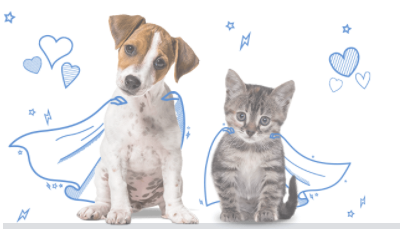We're creating a new front-end 'Experience Kit'
For more information go to the #Experience-library-support Slack channel (Co-op colleagues only).
SEO for images and PDFs
You should optimise images and PDFs for search. This can also help to improve accessibility.
Avoid using text on images
This is because search engines and screen readers cannot read text that’s on an image.
Any text that appears on a webpage should be written in HTML.
Sometimes you might have to use an image that contains text, for example if you’re publishing an infographic.
If you have to use an image that contains text, you should write the text in HTML below the image.
Use alternative text on images
Alternative text describes the appearance and function of an image.
Alternative text:
- helps search engines understand what an image is
- makes your webpage more accessible for people using screen readers
- is displayed on the page if the image can’t be
If the image you’re using does not do anything to set context or improve understanding of the page content, you do not need to add alternative text.
When writing alternative text:
- use keywords in a natural-sounding way
- keep it short and precise – it should be less than 125 characters long
- be descriptive
- there’s no need to include the words “picture of” or “image of”
Example

An image of a cat and dog wearing capes taken from the Co-op Pet Insurance website
Here is a good example of alternative text for this image:
"jack russell terrier puppy and silver tabby kitten wearing cape illustrations"
Here is a bad example of alternative text for this image:
"dog insurance cat insurance buy pet insurance uk"
Avoid using PDFs
This is because PDFs
- are harder to find than webpage content
- are not designed for reading on screens
- can be slow to load
- can be more difficult to navigate
- are harder to keep up to date
Read more about why content should be published in HTML and not PDF on the Government Digital Service blog.
If you have to use a PDF, make it accessible and findable
There might be times when you have to use a PDF, for example if you’re creating offline content that needs to be printed like a poster.
You should make sure that the text in the PDF is also available in HTML or another accessible format, and you should create a host page for the PDF.
The host page should contain:
- a link to the PDF
- text that you’ve optimised for search using our ">search engine optimisation guidance
- an introduction to the PDF
- a list of the PDF’s content
You should also optimise the PDF.
How to optimise PDFs
To reduce load time, use standard fonts and reduce the size of ('compress') the PDF. You can compress PDFs using Adobe Acrobat.
Make sure your PDF file name relates to the content and includes relevant keywords. For example, ‘co-op-food-labelling-guide.pdf’.
Use headings to break up the text and include relevant links.
Make sure the metadata of the PDF contains keywords. You can amend the metadata by going to ‘Document Properties’.
Set alternative text for any images within the PDF, just like you would do for a web page. You can do this through the ‘Tools’ menu.